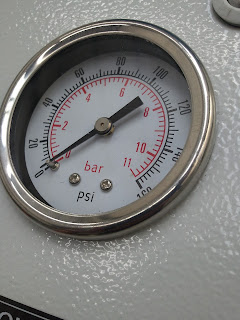Closed Loop Tension Control describes of the systems we use to accurately control the tension of materials running through slitting and winding machines; the simplest description of the process that I can come up with for the purposes of this blog post is thus:
Now I'll be the first to admit that the above paragraph is hardly a snappy explanation of a process that is essential to controlling substrate tension, so I'm going to try and simplify even further by explaining why you might want closed loop tension control rather than explaining how it works (I often find that telling customers why a feature is useful is more pertinent than explaining how said feature works). So steel yourself, here comes the summary:
Why you might need Closed Loop Tension Control.
If the material you are winding or slitting stretches, distorts or winds poorly if put under too much (or too little) tension then Closed Loop Tension Control could be the answer to the problem.
When we utilise Closed Loop Tension Control on a machine load cell (sensors) are installed on key parts of the machine, these load cells measure the actual tension of the materials being wound as it passes through the machine. The information fed back from the load cells is then used by the control system to make precise adjustments to the machine to attain perfect tension throughout the slitting or rewinding process.
Now I'll be the first to admit that the above paragraph is hardly a snappy explanation of a process that is essential to controlling substrate tension, so I'm going to try and simplify even further by explaining why you might want closed loop tension control rather than explaining how it works (I often find that telling customers why a feature is useful is more pertinent than explaining how said feature works). So steel yourself, here comes the summary:
Why you might need Closed Loop Tension Control.
If the material you are winding or slitting stretches, distorts or winds poorly if put under too much (or too little) tension then Closed Loop Tension Control could be the answer to the problem.

Comments
Post a Comment